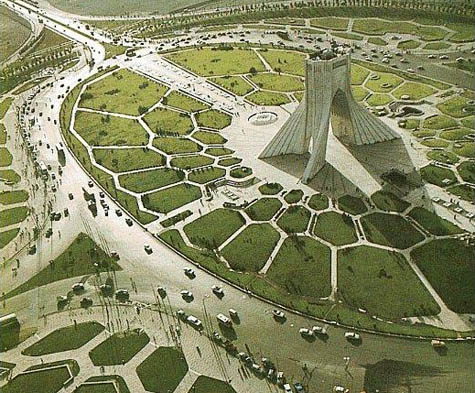 [Image: Azadi Tower in Tehran's Azadi Square].
[Image: Azadi Tower in Tehran's Azadi Square].At one point late in the book, Zoellner is discussing Iran's uranium-processing program and that country's president, Mahmoud Ahmadinejad—who, as Zoellner points out, earned his doctorate in Traffic and Transport. Ahmadinejad, that is, is an urban designer. However, he "is also said to be a fervent believer in a Shiite folk belief," Zoellner writes. This "folk belief" is "the return of the 'hidden imam,' a holy man who disappeared in the ninth century and is believed by Shiites to be the Mahdi, a salvation figure whose dramatic reentry into the world will trigger a final confrontation between good and evil before the dawning of a final age of justice and peace. This is not found in the Koran, but millions believe it to be true."
This Second Coming, as it were, or the eagerly awaited return of someone or something that left us long ago, has its own spatial requirements, however—and, Zoellner again points out, "There have also been reports that the president—a doctor of traffic—has studied the layout of Tehran to make sure the city can handle the crush of people who will arrive for the imam's first procession."
The idea that the Second Coming of a messianic figure—from any religion—will bring with it enormous traffic-engineering concerns is something that had not, in fact, occurred to me. What would Tom Vanderbilt have to say about this, I wonder?
But has there been any serious study of what we might call messianic urbanism: the theologically motivated preemptive re-design of a city in order that that metropolis might better receive a future, supernatural guest? Somewhere between the work of Walter Benjamin and Robert Moses, it would be the city spatially formatted in an urbanism of End Times arrival.
No comments:
Post a Comment